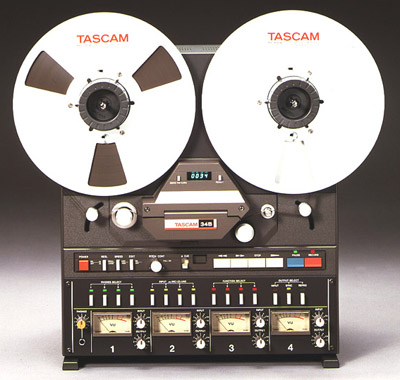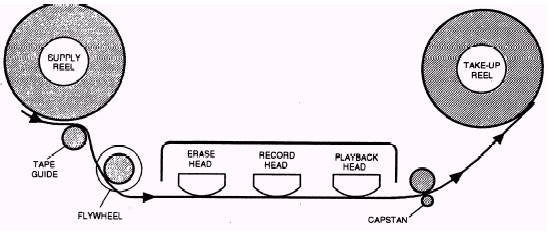 Reel-to-reel, the final boss of the audio world. Reel-to-reel are one of the most expensive audio formats you are able to collect for. Top of the line machines can go up towards thousands of dollars and the tapes can go for hundreds of dollars too, depending on artist and band of course. It is the go to format for many audiophiles and for good reason. So what justifies the price?
Reel-to-reel, the final boss of the audio world. Reel-to-reel are one of the most expensive audio formats you are able to collect for. Top of the line machines can go up towards thousands of dollars and the tapes can go for hundreds of dollars too, depending on artist and band of course. It is the go to format for many audiophiles and for good reason. So what justifies the price?
Well before we go to that, lets talk about history. The reel-to-reel started it’s life in Germany in that late 1920s and did not have a name for it has it was since all magnetic tape recorders used it. Early tapes were made from papers and later plastic. Later on in the 1950s tapes where one-channel mono audio and used vacuum tubes. A company formed called Ampex Corporation which contributed a lot to reel-to-reel. Later on in mid-1950s two-channel stereo came into existent. The reel-to-reel would start to lose its popularity in the 1980s due to the cheaper compact cassettes.
 So what makes theses tapes and machines so special? Well the first lets begin with the tapes, they are very basic. Essential it is a magnetic tape wrapped around in a reel that's it. The catch is that the reels can be 3 to 7 inches. The kicker is that in a 3 inch reel can hold up to 50 ft of tape and 7 inch can hold up to 400 ft of magnetic tape. This means up are able to hold much more data which equals a higher audio sound. The machines themselves are expensive depending on brand and the features they have. Audiophiles of course want the best sounding machines, so they want the ones with the best playback heads. The features some machine include are of course recording, an equalizer, pitch control, UV meter, and much much more. The premise of how reel-to-reel works are very simple. The downside is that you manually set up the tapes , so you place the reel on the spool and pull on the tape around the tape guide, flywheel, through the heads, and then the capstan. After that you spin the end of the tape around the take up reel and there should be something that the end of the tape to grip on. Once that is done you are ready to listen to that high quality fidelity.
So what makes theses tapes and machines so special? Well the first lets begin with the tapes, they are very basic. Essential it is a magnetic tape wrapped around in a reel that's it. The catch is that the reels can be 3 to 7 inches. The kicker is that in a 3 inch reel can hold up to 50 ft of tape and 7 inch can hold up to 400 ft of magnetic tape. This means up are able to hold much more data which equals a higher audio sound. The machines themselves are expensive depending on brand and the features they have. Audiophiles of course want the best sounding machines, so they want the ones with the best playback heads. The features some machine include are of course recording, an equalizer, pitch control, UV meter, and much much more. The premise of how reel-to-reel works are very simple. The downside is that you manually set up the tapes , so you place the reel on the spool and pull on the tape around the tape guide, flywheel, through the heads, and then the capstan. After that you spin the end of the tape around the take up reel and there should be something that the end of the tape to grip on. Once that is done you are ready to listen to that high quality fidelity.
Now I hope it is understandable why reel-to-reel are left to the hardcore enthusiast. They are just too complicated and expensive for casual listeners to dwell with. That is not even dealing with tape types and widths. As for the benefits audiophile, like with vinyl, would tell you it is like nothing else. The sound of analog is warm and inviting and overall is much more natural compared to digital formats. And to some, that justifies the price.
How to set up a reel-to-reelsource:https://en.wikipedia.org/wiki/Reel-to-reel_audio_tape_recording
https://reeltoreeltech.com/reel-history/

Reel-to-Reel is quite the outlier when it comes to media formats. Sure it has high quality sound but I would personally stick with something more practical. It’s really cool don’t get me wrong. Anyways cool blog!
ReplyDeleteThe mechanics of the Reel-to-Reel look really unique and advanced for their time, explaining their high value and importance in the audio industry. I like how the reels came in different sizes for maximum audio clarity and output, making this technology all the more special. Great post!
ReplyDeleteI like how you provided some background about the Reel-to-reel machine. It is amazing to learn about both its history and its constructive process. Great blog!
ReplyDelete